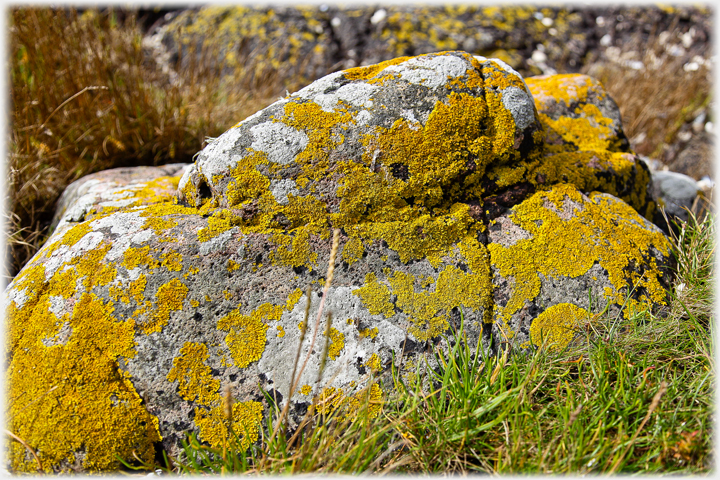
Symbiogenesis
That animal and plant cells originated through symbiosis is no longer controversial. ...most evolutionary novelty arose, and still arises, directly from symbiosis.
Lynn Margulis (1998)

Lichens, like the ones on this stone, are highly successful organisms and are found everywhere. Each is a symbiotic concoction of algae, fungi and bacteria; algae can convert light to food, fungi can offer protection and support, and bacteria can offer necessary chemical conversions. Another example of symbiosis is very near home. The mitochondria, powering every cell of our bodies, appear to be the decedents of co-opted bacteria.
Kropotkin
 Kropotkin spent much time studying co-operation amongst animals.
would have loved this information. A considerable part of his work was devoted to documenting how
co-operation,
Kropotkin spent much time studying co-operation amongst animals.
would have loved this information. A considerable part of his work was devoted to documenting how
co-operation,
 Weaving together ideas of co-operation and the foundations of language.
rather than conflict, is the better characterization of much of life. Lichens and mitochondria offer but two examples of symbiogenesis. Margulis argues, as many others do, that it is this co-operation of different
species
Weaving together ideas of co-operation and the foundations of language.
rather than conflict, is the better characterization of much of life. Lichens and mitochondria offer but two examples of symbiogenesis. Margulis argues, as many others do, that it is this co-operation of different
species
 Daoism might be seen as being about co-operating with nature.
that accounts for much of the evolution of life on this planet. This does not replace the notion of the ‘survival of the
fittest’,
Daoism might be seen as being about co-operating with nature.
that accounts for much of the evolution of life on this planet. This does not replace the notion of the ‘survival of the
fittest’,
 How good do we think explanations, like evolution, actually are?
rather it alerts us to seeing that ‘fittest’ can also mean most able to ‘fit into’ its environment, rather than the most able to win a fight.
How good do we think explanations, like evolution, actually are?
rather it alerts us to seeing that ‘fittest’ can also mean most able to ‘fit into’ its environment, rather than the most able to win a fight.
The two quotes are from pages 9 and 43 of her book The Symbiotic Planet: a New Look at Evolution, the 1999 edition published by Phoenix, an imprint of Orion Books. The original UK edition was published by Weidenfeld & Nicolson.
This thriving colony of lichens was photographed in the south-west of Scotland.
Above, hovering on blue introduces a link: click to go, move away to stay.

Saturday 15th February 2025
 ...guide to this site
...guide to this site